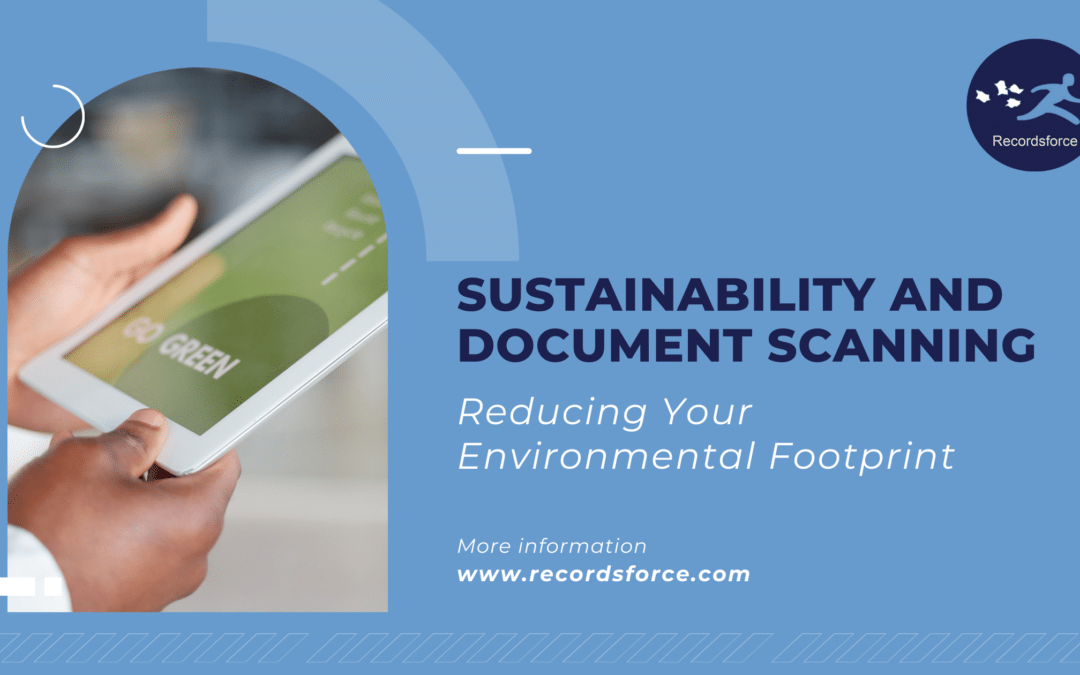Environmental consciousness is becoming increasingly vital and businesses and individuals are seeking innovative ways to contribute to sustainability efforts. One powerful solution that aligns with these objectives is the transition to digital documents through scanning. By embracing document scanning technologies, organizations can significantly reduce their environmental footprint and play a crucial role in fostering a sustainable future.
The Environmental Toll of Paper Usage:
Traditional paper-based documentation processes come with a substantial environmental cost. The paper industry is known for its high demand on natural resources, contributing to deforestation, habitat destruction, and increased carbon emissions. Moreover, the production and disposal of paper involve energy-intensive processes, further exacerbating the environmental impact.
The Benefits of Document Scanning for Sustainability:
Paper Reduction:
- One of the most evident advantages of document scanning is the significant reduction in paper usage. By converting physical documents into digital formats, organizations can curtail their reliance on paper, leading to a direct decrease in the demand for timber and other resources required for paper production.
Energy Efficiency:
- Document scanning not only conserves paper but also reduces the energy consumption associated with printing, copying, and storing physical documents. The energy-intensive processes involved in paper production are circumvented, contributing to a more energy-efficient and sustainable workflow.
Waste Reduction:
- Digital documents eliminate the need for physical storage space, filing cabinets, and the eventual disposal of outdated or unnecessary paperwork. This results in a substantial reduction in waste generation, promoting a cleaner and greener environment.
Streamlined Operations:
- Document scanning facilitates streamlined and efficient document management systems. Digitized files can be easily organized, accessed, and shared, eliminating the need for excessive printing, photocopying, and manual distribution of paper documents.
Carbon Footprint Reduction:
- The carbon footprint associated with transportation, distribution, and disposal of paper documents is considerably diminished through digital alternatives. Document scanning contributes to a more sustainable supply chain by minimizing the environmental impact of physical document logistics.
Long-Term Cost Savings:
- While the primary focus is on environmental benefits, the transition to digital documents also brings economic advantages. Long-term cost savings result from reduced paper expenses, lower energy consumption, and more efficient use of office space.
The Path to Sustainable Document Management:
Investing in Advanced Scanning Technologies:
- Adopting state-of-the-art document scanning technologies ensures the efficient conversion of physical documents into digital formats. Document scanning companies with high-speed scanners, optical character recognition (OCR), and cloud-based storage solutions can enhance the speed and accuracy of the scanning process.
Implementing Document Management Systems:
- Integrating document management systems allows organizations to organize, categorize, and access digital documents seamlessly. This not only enhances productivity but also contributes to sustainability by reducing the need for physical storage space and the associated environmental costs.
In the pursuit of a sustainable future, every small change contributes to the greater good. The adoption of document scanning technologies is a tangible and impactful step that businesses and individuals can take to reduce their environmental footprint. By minimizing paper usage, streamlining operations, and embracing digital workflows, organizations not only contribute to global sustainability efforts. The journey toward a paperless future is a vital stride towards a greener, cleaner, and more sustainable world.

